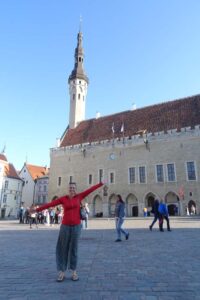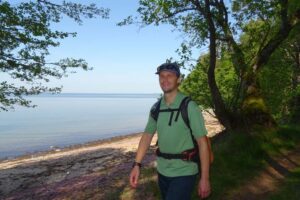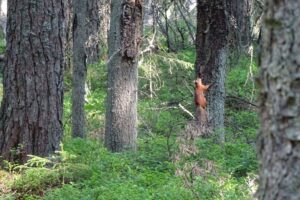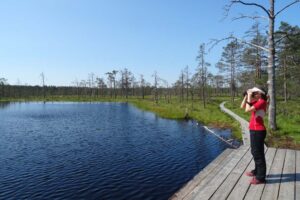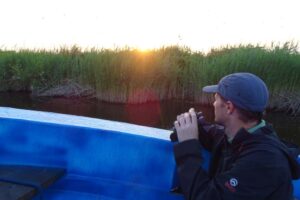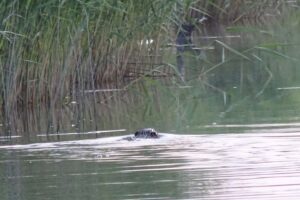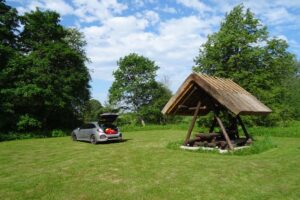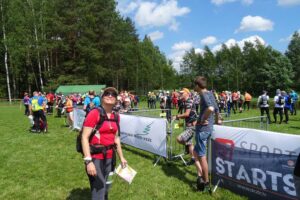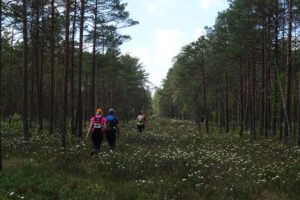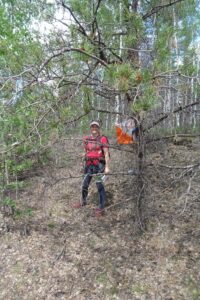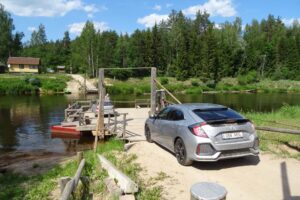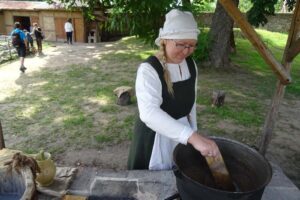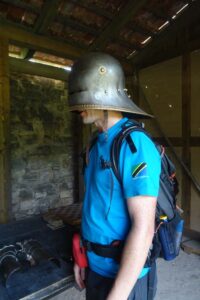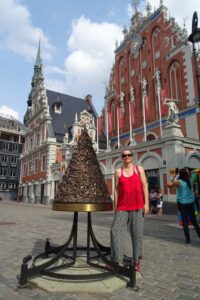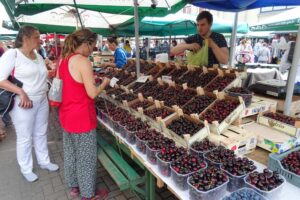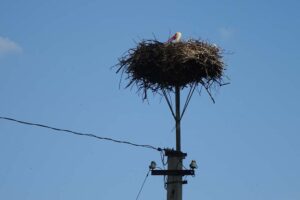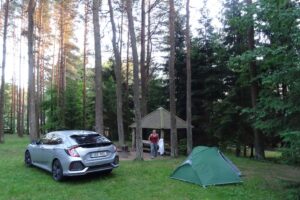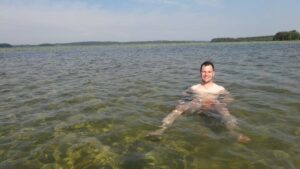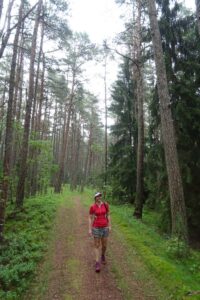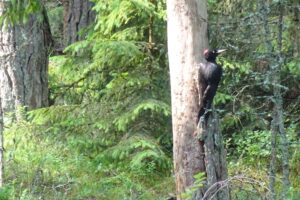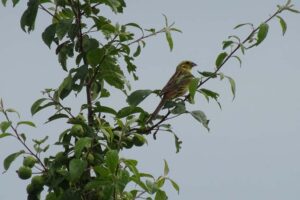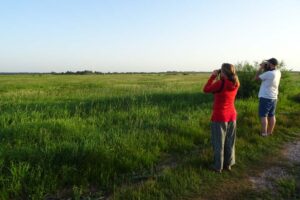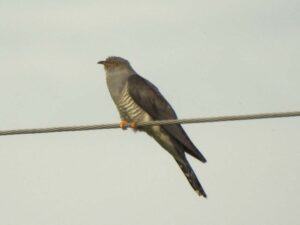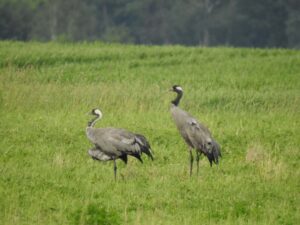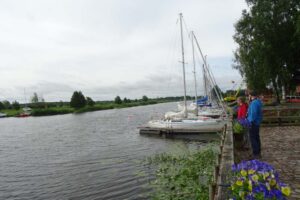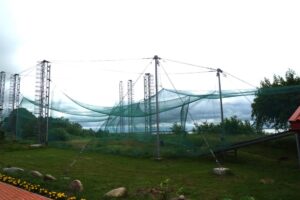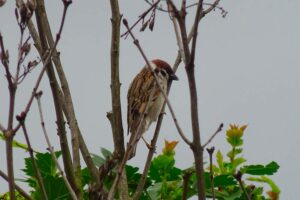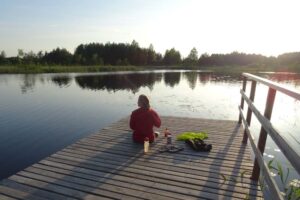Baltic States
Jude arrived first, and Jon landed a few hours later in Tallinn, Estonia, our first stop on our Baltic adventure. We drove straight into Tallinn for our first night and enjoyed wandering the streets of this historic city. The next morning we continued to explore this quaint town on foot, and gobbled up a delicious breakfast along the way.
As we had signed up for a rogaine in Latvia, we only had a limited number of days to explore Estonia. We decided to head to Lahemaa NP as people had recommended it. We hiked our way around several trails in the national park, which not only includes natural areas, but also villages and other built up areas.
One morning Jude spotted a red fox in the garden of our airbnb, her first ever. And as we drove off that day we saw a raccoondog cross the road right in front of us! We had never even heard of raccoondogs, but managed to catch a few more glimpses as he appeared to be hunting alongside the road before disappearing into the forest.
At one of our free campsites we noticed you could hire a boat with guide to look for beavers. We had seen a beaver from afar earlier that day (we were pretty certain), but were keen to try to see a few more. We saw loads, but most disappeared quickly as soon as they saw a boat approaching. It was still a lovely boat trip and we even managed to catch the setting sun (which happens very late in Estonia in summer!).
We arrived in Latvia the evening before the rogaine and camped nearby in the forest. In the morning we picked up our maps, borrowed some northern hemisphere compasses and set to work to plan a route. It was a 24hr rogaine, but we only intended to go out for some hours before coming back for dinner and a good night’s sleep.
At noon we were ready to go. Well protected against ticks we set off together with a few hundred others. On the map we had seen many ‘rides’ and even though we had asked what they were, we didn’t really know what they would actually look like. So we decided to follow some teams to learn. It was a good thing we did. We learned a lot picking up the first two checkpoints, and were confident we now understood this new feature.
The rogaine was fantastic, so good to finally do one again. It was great fun heading out into the forests of Latvia, with just a compass and a map and having to find our way around the bush. We managed to cross a wide stream at a beaver dam (and ended up with wet feet), and nailed every single checkpoint we wanted to find. We had worried we would be rusty on the navigation, but it was comforting to realise we hadn’t forgotten our skills.
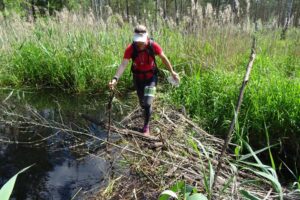
Jude crossing a beaver dam to get to a control, they are pretty solid and very impressive, but you do get wet feet
Just over 10 hours after we set off from the hash house we were back, still in full daylight. We had dinner and cleaned up a bit under the cold showers as the sun finally set.
After popping into a wildlife park in Riga, we went to check out Cēsis castle. They have done a fantastic job in making it a much more interesting place then your standard historical sites. We were given a candle lantern to explore some of the dark tunnels and winding staircases on our own, stopping along the way in a room where they used projectors on the walls to tell the history of the buildings throughout the years.
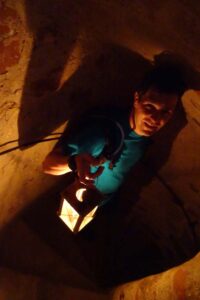
exploring Cesis Castle in Riga, Latvia. It was a lovely way to explore on your own, giving it a bit of authenticity
In the courtyard many people were using ancient techniques for a variety of things, and explaining what they were doing. We watched a lady make soap, another was working in the veggie gardens, and one very enthusiastic guy told us all about the history and the armoury used in the old days. They were all volunteers and all dressed in historical clothing. There were many other crafts around and it certainly brought the place to life for us.
We learned that the first Christmas tree originated from Riga and there is even a spot in the Town Hall Square to mark the occasion from way back in 1510. The Brotherhood of the Blackheads (a merchant guild) used to celebrate the period between Christmas and New Year’s Eve. Legend claims they placed a fir tree in the square and decorated it with flowers made of paper before setting the whole thing on fire after dancing around it. Voila, a tradition is born.
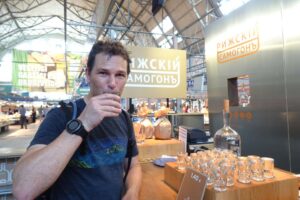
Jon trying some vodka in the halls constructed in 1924 by using old German zeppelin hangers, now an excellent indoor food market
Latvia is a small country and as we left Riga, it didn’t take long before we crossed yet another border into Lithuania. Our first stop here was the hill of the crosses. It’s quite surreal actually that in an almost flat landscape they found a tiny bump, and thousands and thousands of crosses can now be found here, with many new crosses added each day of the year. There must be millions of them now.
After visiting the Cold War Museum inside the Zemaitija NP, an old ballistic missile silo and rocket launch base, we continued our way to the Curonian Spit. This is a 98km long peninsula, now a world heritage site, between 400m and 4km wide, separating the Curonian Lagoon from the Baltic Sea. Part of it sits in Russia, but we planned to ferry across to the Lithuanian half. Wild camping is strictly not allowed here, so we found ourselves packed with many others onto the only campground on the spit. We went out for some walks, found some new birds, and had some great food.
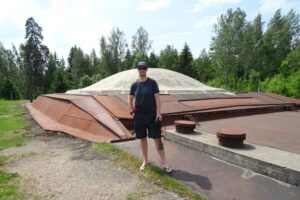
Jon at the Cold War Museum, an old ballistic missile silo and rocket launch base in Zemaitija NP. It was equipped to destroy all of Europe. During 1963-1978, four medium-range ballistic missiles were deployed at the base, armed with 2- megaton power thermonuclear warheads
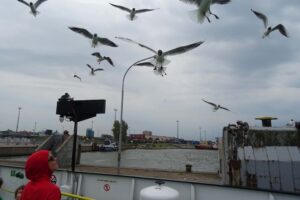
Jude on the ferry to the Curonian Spit, Lithuania, with lots of common black-headed gulls flying around, hoping for some bread

walking around the Parnidis Dune, just south of Nida on the Curonian Spit, they are Europe’s highest drifting sand dunes, the highest reaching about 60m
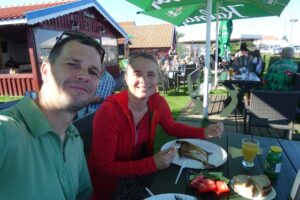
eating more local delicious food, this time we find a fish smoking restaurant right next to the water
In the little tourist office we asked if they could recommend a bird guide for the Nemunas Delta Regional Park where we were headed next. We pinged off an email to the guy, not expecting much as we would arrive there on the weekend. The guy we emailed wasn’t in the country, but he put us in touch with Povilas who can only take people out on weekends (lucky us).
Povilas was not only the best bird guide ever (his knowledge of all birds, including sounds, is phenomenal), but he was also just a really nice guy. We had two fantastic days together with him, and were sad to say goodbye at the end. It’s always great to make new friends on a trip.
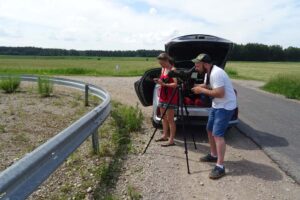
we meet Povilas, a super cool guy and bird-watcher extraordinaire, together we spend 2 days looking for birds in the Nemunas Delta
We walked around several areas in and outside the Nemunas Delta, drove to many different locations, including some non-birding ones to see the sights (like Minge, which is known as the Venice of Lithuania), and visited a bird ringing station on the Vente Horn peninsula with the world’s largest bird trap. It was very interesting to see how that works, and we watched 11 year old Liepa ring birds, and Vytautas Jusys (the head-ringer) write numbers on the wings of dragonflies!
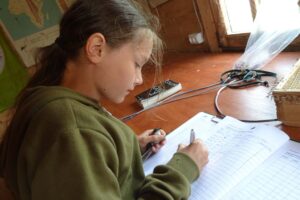
11 year-ol Liepa knows what she is doing when ringing birds, her parents are very supportive as she loves birds
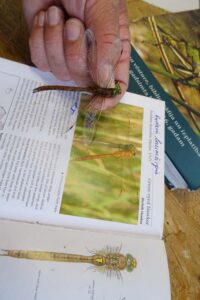
Vytautas Jusys (the head-ringer) writes numbers on the wings of dragonflies that get caught in the nets to track them
During spring the small hills in the region become islands, as the entire delta floods, but when we were there it had dried up again, making it easier to get around. Together with Povilas we managed to find many, many interesting birds, including 31 (!) new ones for us. Povilas also taught us there are hybrids in the bird world. We watched a beautiful raptor in a hay-field and tried to determine if it was a lesser spotted or greater spotted eagle, it turned out it was both…!
After that wonderful weekend we were on our way again, stopping in briefly to see Trakai Island castle in Lake Galvé, before heading to Vilnius. We had one final day to explore Lithuania’s capital, before we had to fly out very early on Wednesday morning to Frankfurt where we were meeting Lojze and were going to the biggest expo of 4wd expedition vehicles – Abenteur Allrad.
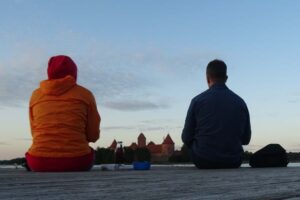
Jude and Jon watching the sunset over Trakai Island Castle in Lake Galvé whilst having some late dinner
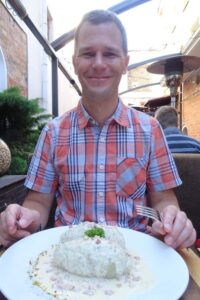
Jon enjoying one of Lithuania’s traditional dishes – cepelinai (zeppelins) – a large potato dumpling filled with pork and covered with a sour cream and bacon sauce
Vilnius was a very pleasant town and we enjoyed walking around some of its ancient streets, and even found another castle to check out. We found another amazing café for lunch, which turned out to be vegan, we’ve had some amazing food here in the Baltic States.

